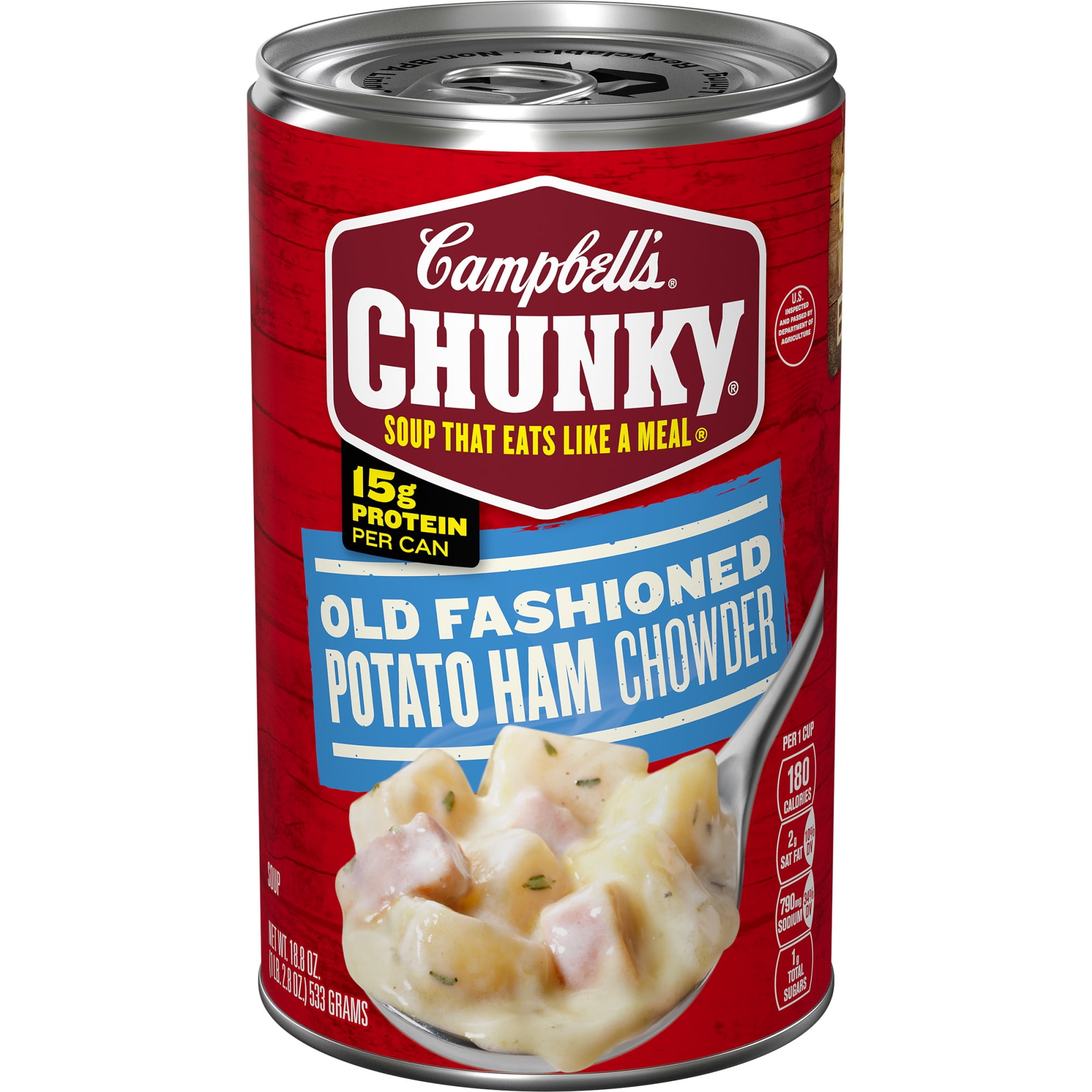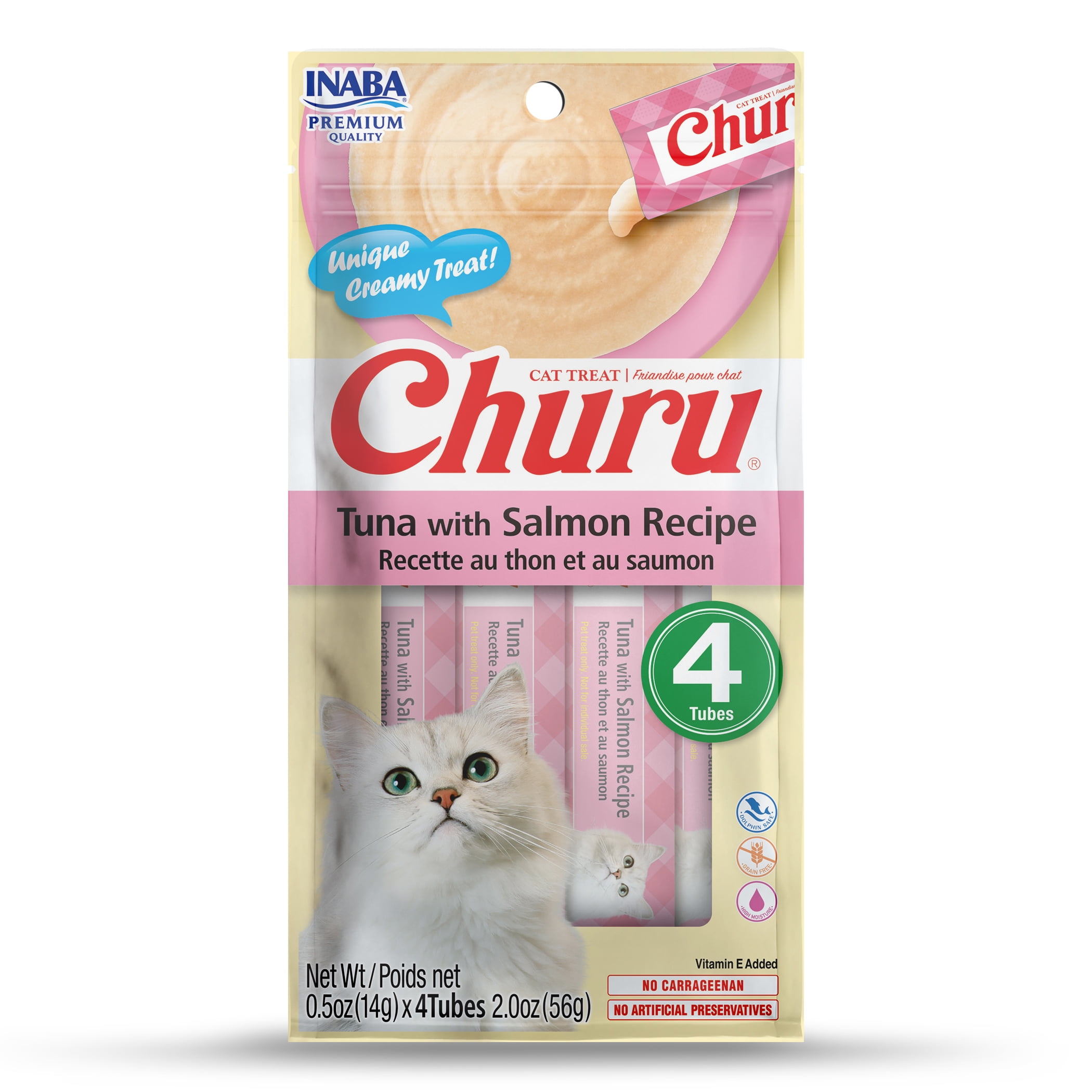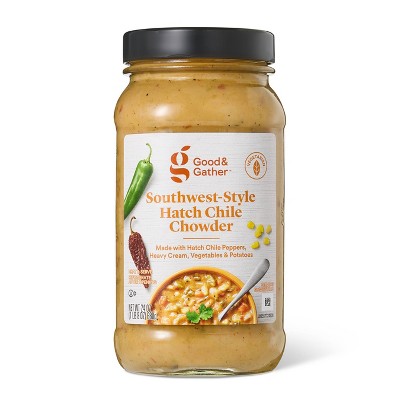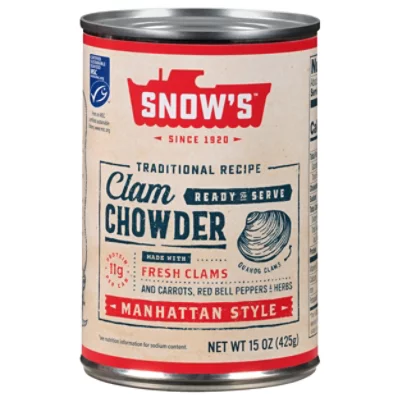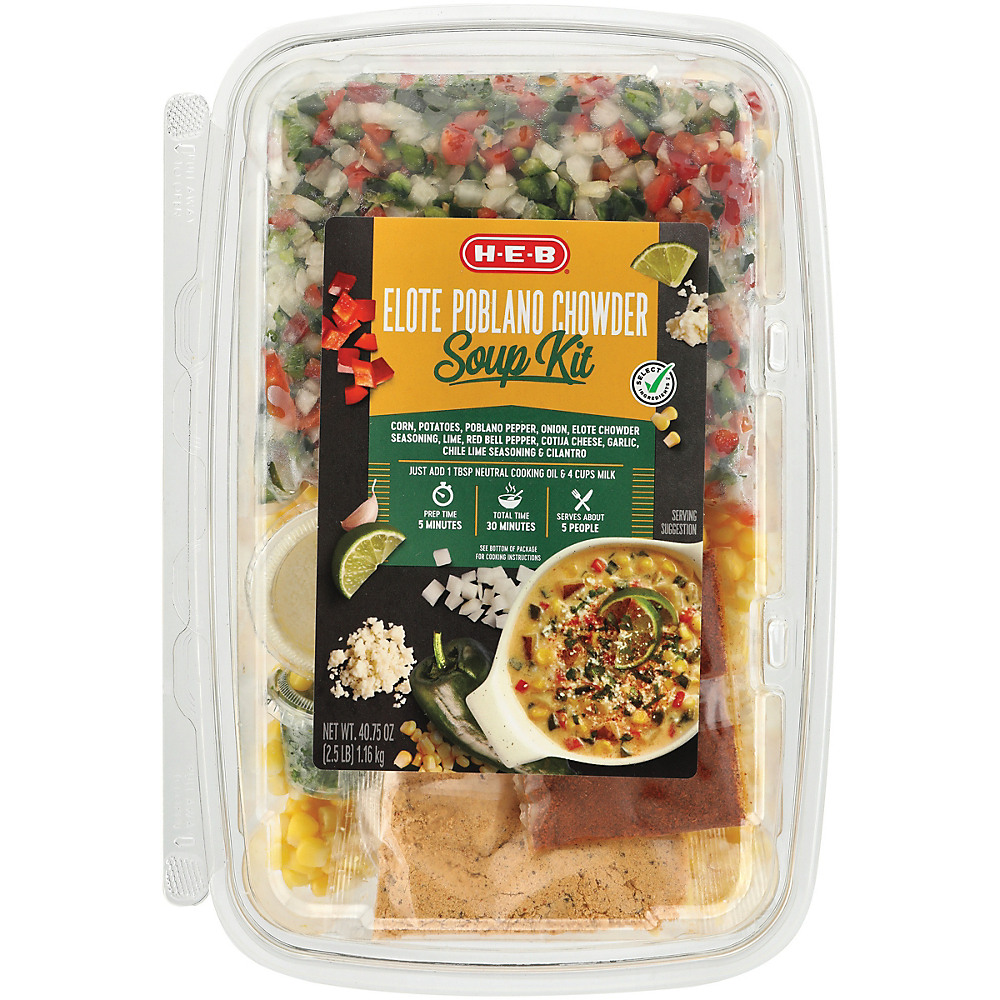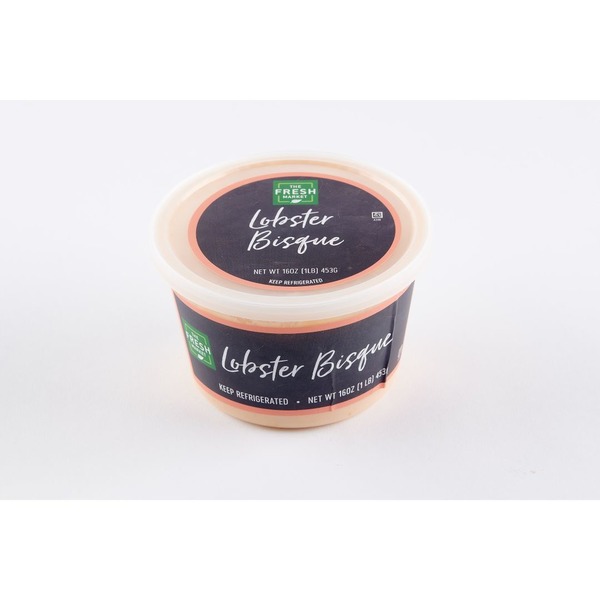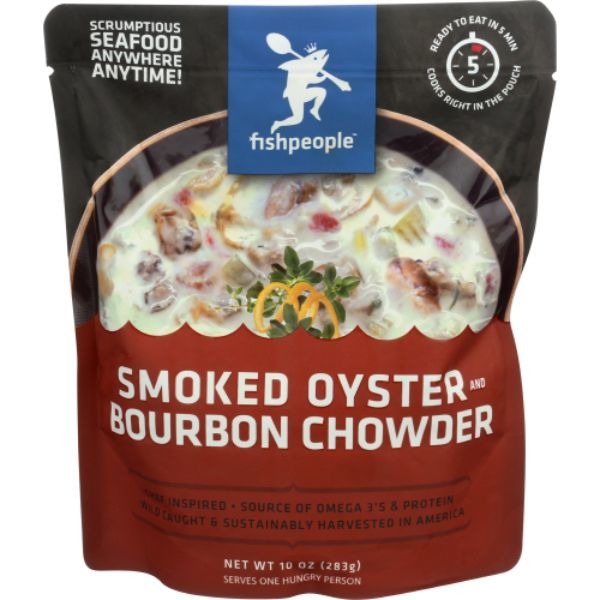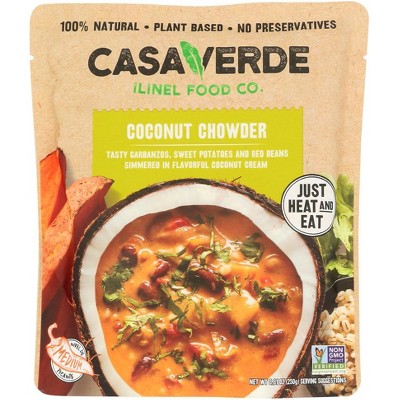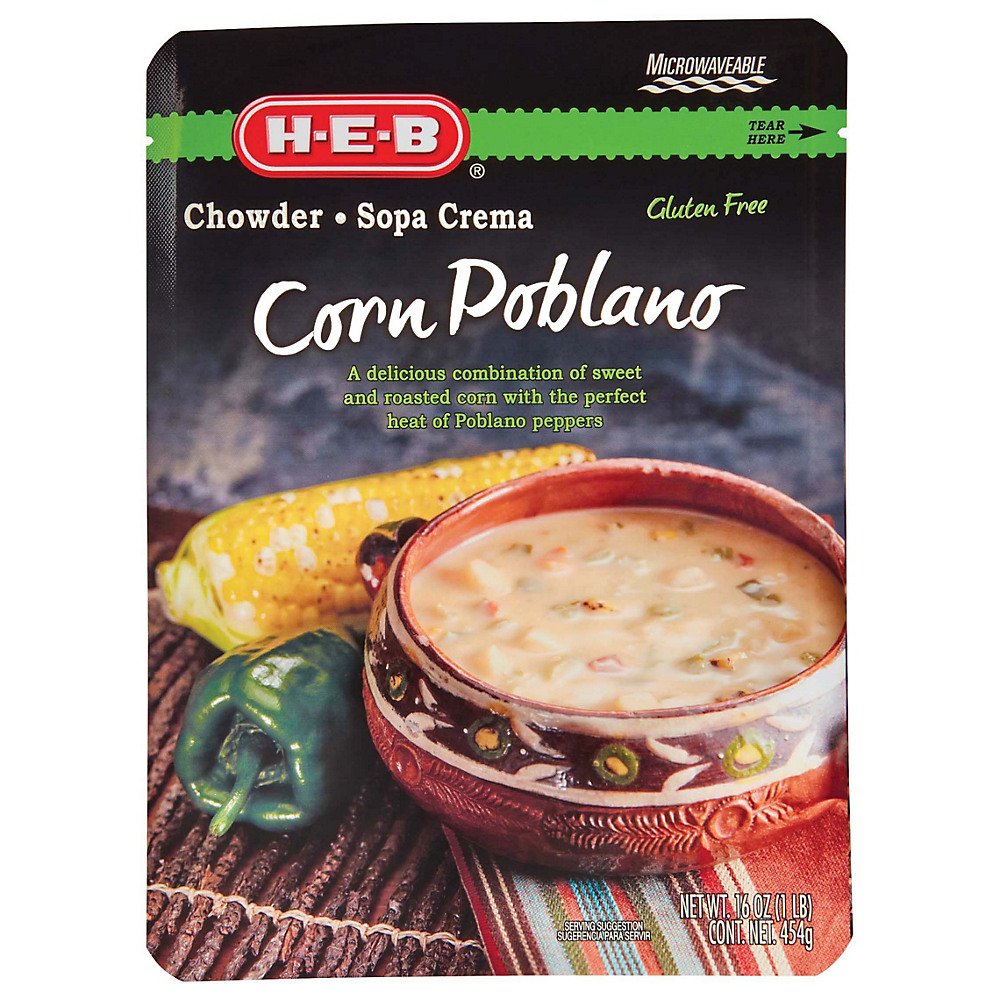SOUPS
MAIN DISHES
Chowder
Chowder is a rich, hearty soup originally popularized in the coastal regions of New England in the United States and Atlantic Canada. Made with cream or milk and thickened by potatoes, it typically features a variety of seafood, most commonly clams, but also fish, shrimp, or crab. Seasonings often include onions, herbs, and bacon, giving it its distinct and comforting flavor.
In recent years, chowder variations have emerged, such as corn and chicken chowders, which substitute the seafood for their respective ingredients. Chowder is traditionally served with oyster crackers or a crusty bread, making it a satisfying and delicious meal on its own for home cooks to prepare and enjoy.
74%
CARBS
13%
FAT
13%
PROTEIN
209 Chowder Products
Campbell's Chunky Old Fashioned Potato Ham Chowder
Churu Meal Chowder, Variety
Good & Gather Southwest-Style Hatch Chile Chowder
Snows Manhattan Chowder Ready To Serve Soup - 15 OZ
H-E-B Elote Poblano Chowder Soup Kit
The Fresh Market Premium Lobster Chowder
fishpeople Smoked Oyster and Bourbon Chowder
Green Chili Chowder Soup Mix
Casa Verde Coconut Chowder
H-E-B Corn Poblano Chowder
3 Recipes for Chowder
Chowder Is Frequently Used With
Chowder FAQ
What is chowder?
What are the basic ingredients for making chowder?
Can I use frozen seafood for chowder?
What type of potato should I use for chowder?
How can I make my chowder thicker or thinner?
How can I store leftover chowder?
What can I substitute for dairy in chowder?
How do I prevent my chowder from curdling?
Expiration & Storage Tips
When does Chowder expire?
Unopened canned chowder can last up to 2-5 years past the printed date on the can if stored in a cool, dry environment. Once opened, canned chowder should be eaten within 2-3 days when kept in the refrigerator. Homemade chowder should be consumed within 2-3 days of preparation. Frozen chowder can last 4-6 months. However, it's important to note that freezing can affect the texture and quality of the chowder.
How do you tell if Chowder is bad?
The best way to tell if your chowder has gone bad is to trust your senses. If it smells funKy or sour, that's a clear sign that it has spoiled. The color may also change to a grayish hue. If the texture becomes slimy, lumpy or separated, it's time to toss the chowder. Lastly, if the chowder tastes off or unpleasant, do not consume it.
Tips for storing Chowder to extend shelf life
• Always refrigerate chowder in airtight containers to keep out bacteria and other contaminants.
• You can also freeze the chowder in freezer-safe containers or heavy-duty freezer bags. Prior to freezing, allow it to cool down then divide it into portions. Remember to leave some space at the top as the soup will expand as it freezes.
• When thawing frozen chowder, it's best to defrost it in the fridge overnight for best results. If in a hurry, you can use a low setting on your microwave but stir frequently to ensure it defrosts evenly and doesn't degrade in texture. Once thawed, consume it within two days and do not refreeze.
• To extend the shelf life of canned chowder, do not store the soup in the opened can. Transfer it to a resealable glass or plastic container before refrigerating.
• If you're reheating the soup, only heat the amount you'll consume, as multiple reheating can degrade the quality of the chowder and also promote bacteria growth.
EXPIRES WITHIN
19 - 29
MONTHS
Equivalents
Substitutes
Health Info
Macros
23g
CARBS
4g
FAT
4g
PROTEIN
Allowed on these diets
LOW FAT
HIGH CALCIUM
MEDITERRANEAN
LOW CARB
GLUTEN FREE
Contains these allergens
MILK

